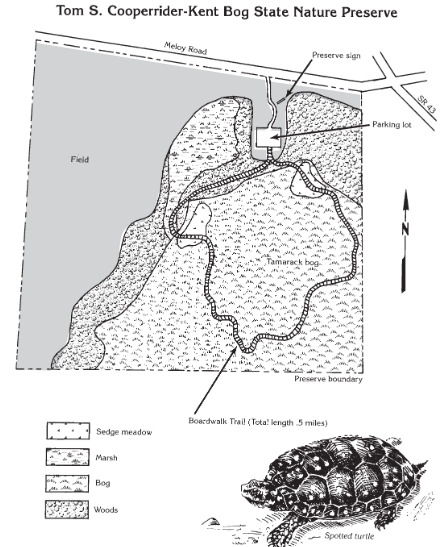Kent Bog State Nature Preserve
About this Location
From I-76 east take the Kent exit (OH-43) north to Meloy Road and head west to the parking lot.
Kent Bog is a living relic from the Ice Age. In glacial times, the boreal forest, including tamarack, dominated the landscape far south of northern Ohio. Today, however, Kent Bog supports the largest, southernmost stand of tamarack in the continental United States.
There are over 3,500 tamaracks in the population with many robust seedlings growing among the larger trees. Here, too, is a fine population of gray birch, also a tree of more northern distribution. Gray Birch and tamarack are both potentially threatened species in Ohio.
With the passing of the Ice Age, the last glacier began to melt, leaving a huge block of ice which was gradually buried by silt, sands, and gravel continued to wash out of the retreating glacier. Eventually, the ice block melted and the resulting depression filled with water. Thus, a deep kettle-hole lake about 50 acres in size was formed. The lake was surrounded by a coniferous forest dominated by spruce, fir, and tamarack. As the climate warmed, plants colonized the shoreline encroaching upon the open waters. A floating mat of sphagnum moss and other bog plants began to cover the lake. Although it would take thousands of years, this was the beginning of a natural process by which the basin eventually would fill in with peat until the bog meadow replaced the glacial lake.
What has become of the glacial lake? The natural process of filling with peat has finally been realized. No longer a lake, the kettle-hole has been transformed into a lovely bog meadow. Fortunately, unusual environmental conditions have enabled most of the boreal vegetation to survive.
Features
Wheelchair accessible trail
Restrooms on site
Entrance fee
Roadside viewing
Content from Official Website
